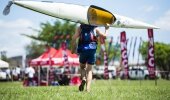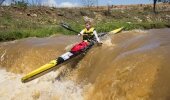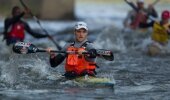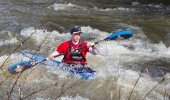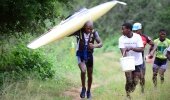Kayaking
Kayaking is the use of a kayak for moving across water. Kayaking and Canoeing are also known as paddling. Kayaking is generally differentiated from canoeing by the sitting position of the paddler and the number of blades on the paddle. A kayak is defined by the International Canoe Federation (the world sanctioning body) as a boat where the paddler faces forward, legs in front, using a double bladed paddle. Almost all kayaks have closed decks, although there are many sit-on-top kayaks which are growing in popularity, as well as inflatable kayaks which come without decks but which have air chambers surrounding the boat. A canoe is defined as a boat where the paddler faces forward and sits or kneels in the boat, using a single bladed paddle. Canoes can be closed deck or open deck.
Canoeing
Canoeing is an outdoor activity that involves a special kind of canoe. Open canoes may be 'poled' (punted), sailed, 'lined and tracked' (using ropes) or even 'gunnel-bobbed'. In modern canoe sport, canoes and kayaks are classified together, although these watercraft have different designs, and historical uses. Both canoes and kayaks may be closed-decked.
Stand Up Paddling (SUP)
Stand up paddle surfing (SUP), or in the Hawaiian language Hoe he'e nalu, is an emerging global sport with a Hawaiian heritage. The sport is an ancient form of surfing, and reemerged as a way for surfing instructors to manage their large groups of students, as standing on the board gave them a higher viewpoint. This increased visibility of what was going on around them such as incoming swell. Surfers have converted because of the versatility of the new sport. Stand up paddle boarding offers surfers the ability to catch more waves in a set, as well as offering a better view of incoming sets.
Source: Wikipedia
